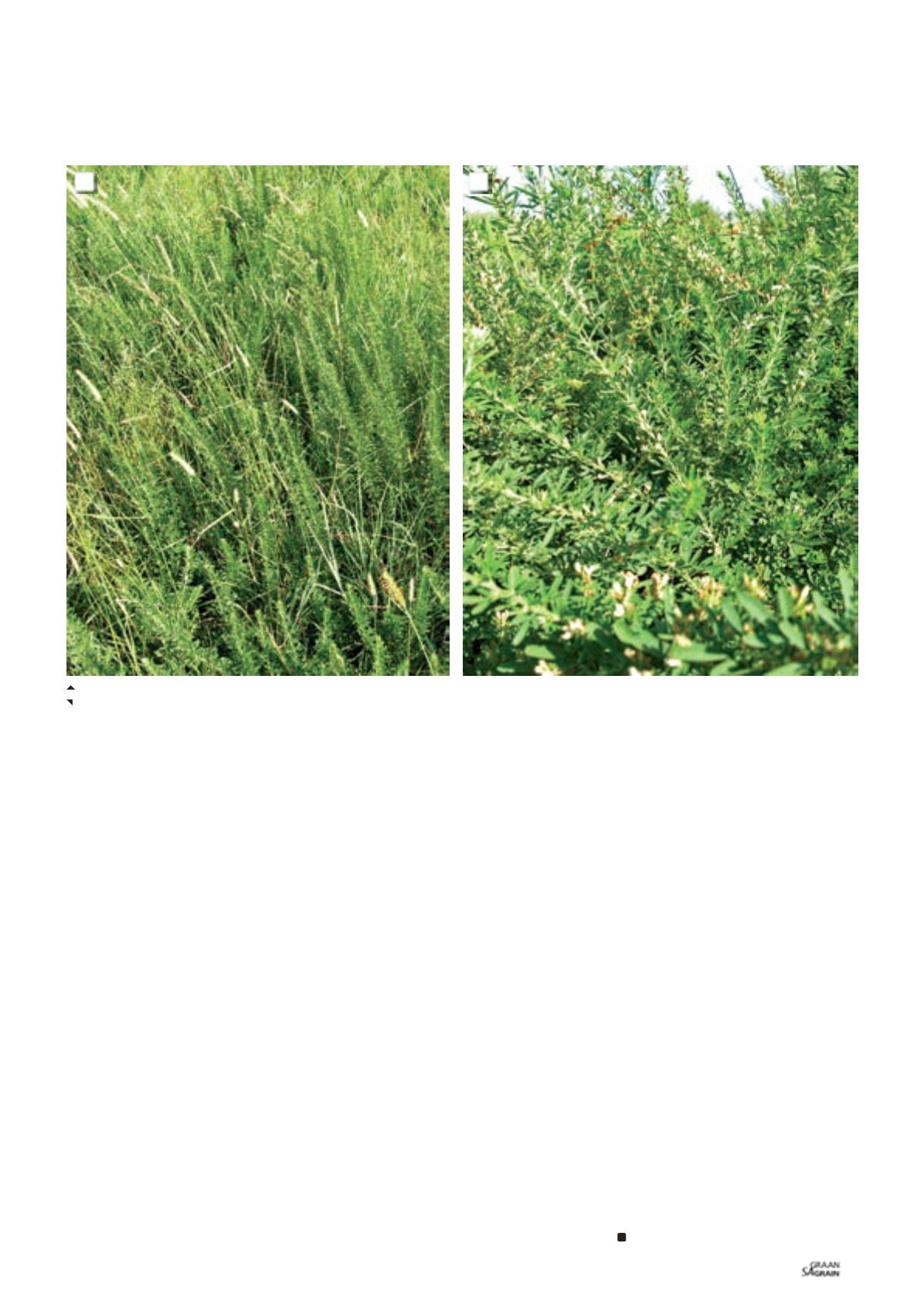

Management challenges
Harvesting and utilising Lespedeza at the correct stage is a man-
agement challenge in its own right. The next challenge entails the
drying of the harvested material to prevent significant leaf loss which
determines the final forage quality.
Since Lespedeza is a perennial crop, seed production is not always
necessary to maintain the stand. It can be advised that the crop will
last longer if you do allow the crop to grow out after at least two
harvests and to allow the root system to build up sufficient reserves
to ensure fast regrowth in the new growing season.
When planting Lespedeza, a few challenges exist with precondition-
ing the seed before planting. Scarification of the seed is necessary
to ensure good germination. Reports have shown that dehulling
the seed results in better germination and seedling viability. It must
also be remembered that the seed needs to be inoculated and when
this process has been done, that the planting of inoculated seed is
conducted when the soil conditions are suitable for bacterial growth
on the root system.
Animal production aspects
Tannin is probably the most concerning compound that is responsi-
ble for low quality roughage and ultimately poor animal production.
The tannin however is responsible for the non-bloating characteris-
tic of Lespedeza, but also decreases the digestibility and palatability
of the roughage. Lower tannin varieties do exist and have improved
forage quality. The protein content can vary between 10% - 16% un-
der dryland growing conditions. With hay yields of up to 8 tons/ha
being recorded, the window of opportunity however when grazed, is
small to achieve optimal utilisation of the pasture crop in field.
Research has also shown that the tannin has caused a significant
decline in faecal egg count of gastrointestinal parasites of ruminants,
which reduces the effects of parasitic nematodes on animal health
and to lower pasture contamination.
Conclusion
Lespedeza is a leguminous pasture crop with some very valuable
properties. From an animal production perspective, the manage-
ment required to optimally utilise the crop is important. The species
however, has the ability to utilise very poor quality soil and then pro-
vide valuable forage of good quality.
During this period of establishing, growing and the stage of utilisa-
tion, the species is also contributing significantly to a renewed soil
condition. This includes the build-up of nitrogen and organic matter
as a result of a vigorous root system. Like many pasture species,
the quality of the pasture crop lies in the correct time of harvest
through mowing and/or grazing.
For more information, contact Dr Wayne Truter at
wayne.truter@
up.ac.za
, Prof Chris Dannhauser at
admin@GrassSA.co.za ,Dr Hen-
drik Smith at
hendrik.smith@grainsa.co.zaor Mr Gerrie Trytsman at
gtrytsman@arc.agric.za .87
March 2015
3: Veld restoration.
4: Lespedeza flowering.
3
4

















